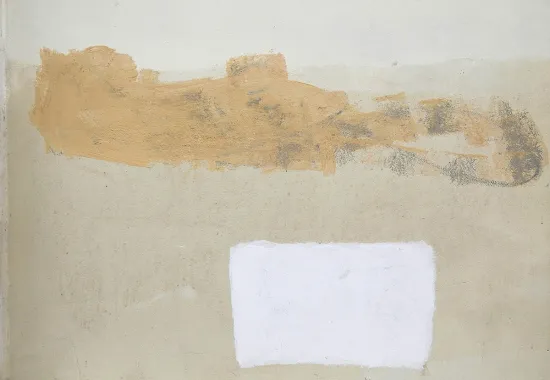A Pitch for a New Kind of Poetry Handbook

I started writing poems the first time I read contemporary poetry, in seventh grade. That is when I remember thrilling to Sylvia Plath’s Ariel. Not Shakespeare or Tennyson or Poe with their antique diction and fair ladies—rather, a woman who spoke to me and who made me want to talk back. The germ of my new book, Windows and Doors: A Poet Reads Literary Theory, began, perhaps, four years after that, when the advisor of my high-school literary magazine suggested an addition to one of my poems. The poem outlined the body’s dissolving while the self remained. He told me to add the line, “a cascade of waterfall white” to describe the melting bones. It didn’t feel right, but what did I know? I added the line. If only I could have argued that it was frivolous: because cascade and waterfall are redundant, because “white” is clear from the previous line, and because the poem’s existential point demands brevity.
Fast forward to the one year (1979–1980) I did a creative writing MA at Johns Hopkins, when I somehow ended up in a Humanities Center graduate seminar on the work of historian Michel Foucault. The room was crowded with Humanities Center students using words such as “hegemony” and “panopticon.” They were speaking a foreign language, one that I had no idea how to learn. I dropped the class and added one taught by a Writing Seminars instructor. There we read and discussed twentieth–century novels. At Hopkins back then, the writers poked fun at the theorists and their jargon and the fact that they were analyzing “texts” instead of literature. Jacques Derrida gave a talk and I didn’t go.
For seven years after that degree, I flailed like a fish in a wide but shallow pool, attending poetry readings at the Library of Congress around the corner from the Capitol Hill restaurant where I worked as a waitress, reading novels, and occasionally writing poems. I loved the silence—the white space—as much as the words. I moved back to Baltimore and taught freshman composition, and after a few years, the low adjunct pay plus a hunger to learn more drove me to PhD programs in literature, first at the University of Delaware and then at the University of Maryland.
I learned the language of that classroom at Hopkins, feeling like one of those thin, dessicated sponges dropped into water. Feminist theory allowed me to understand why I felt intimidated about speaking up in class, one insight among many. Queer theory articulated my bisexual orientation. Marxist and race theory helped me to understand the inequities I saw around me. Narrative theory explained my satisfaction (or not) with the endings of novels. Deconstruction awakened me to the push and pull of binary oppositions, including the one between poetry and prose. I was no longer a naïve reader; rather, to use Robert Scholes’s term, I became a crafty one. I let go of the notion that the only texts worth studying are formally excellent ones, as I discovered that “mistakes” and contradictions in texts could help me articulate interesting questions. I once again applied myself to writing poems, driven by the desire to document my new ways of seeing, and with the help of my women’s writing group in Baltimore, I revised them. I published them in magazines. Four months after I sent it out, my first book of poems was accepted for publication.
When it came time to look for a full–time teaching job, I applied for creative writing jobs, since I wanted to continue to write poems. On the basis of Red Under the Skin, that first book of poems, I was hired to teach poetry writing part–time in the low residency MFA program at Vermont College. My first lecture was about etymology and poetry, a topic spurred by my research into the history of the word “coquette.” I continued to look for a full-time job, ending up at a small college, Westminster in Salt Lake City, where everyone taught a variety of courses.
Over the years, with the help of my students and colleagues, I learned how to teach poetry writing. But I was dismayed by poetry handbooks that seemed dumbed down or frozen in the fifties. Books of essays by poets were better, but haphazard. And much current critical writing about poetry was done in the form of book reviews or craft essays by poets who resist the ideological insights I am passionate about. Finally, books by scholars of poetry (that ever–diminishing group) seemed to be speaking only to other scholars, and taking their examples from a thin slice of contemporary poetry.
So I wrote the book I wished I’d had in my poetry writing classes, first as a student and then as a teacher, one that allows history, philosophy, and literary theory into the creative writing classroom. Windows and Doors places post-structuralist and postmodern ways of thinking alongside the formalist, making explicit what is usually tacit. It addresses the foundational topics of poetry: diction, syntax, rhythm, emotion, figurative language, narrative, genre, book design, and performativity. Through copious examples, it offers writing prompts. Instructors have told me it works. Students like it. The University of Michigan Press would be happy to send you an examination copy—please tell them (or me) where to send it.
Illustration by Christian Blaza. Christian Blaza is an illustrator based in New Jersey. Christian graduated Montclair State University in May 2015 with a 3.618 GPA. Along with receiving a BFA in Animation/Illustration, he was awarded Excellence in Illustration by the Department of Art & Design for the class of 2015. Blaza is interested in editorial, sequential, and fantasy illustrations.
Recommended
Mercy
Eclipsing
Psychic Numbing






